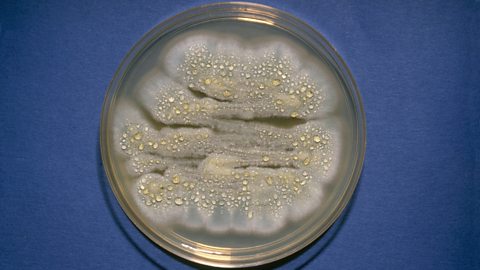Evidence for evolution - resistant bacteria
Antibiotic resistance
Bacteria can evolve quickly because they reproduce at a fast rate. Mutations of bacteriaSingle-celled microorganisms, some of which are pathogenic in humans, animals and plants. Singular is bacterium. produce new strains. Some bacteria might become resistant to certain antibioticSubstance that controls the spread of bacteria in the body by killing them or stopping them reproducing., such as penicillin, and cannot be destroyed by the antibiotic. The evolution of the bacteria is an example of natural selectionThe natural process whereby the best-adapted individuals survive longer, have more offspring and thereby spread their characteristics. Sometimes referred to as 'survival of the fittest'..
Development of resistance
The main steps in the development of resistance are:
- random mutations occur in the genes of individual bacterial cells
- some mutations protect the bacterial cell from the effects of the antibiotic
- bacteria without the mutation die or cannot reproduce when the antibiotic is present
- resistant bacteria can reproduce with less competition from normal bacterial strains
MRSA
The number of resistant strains has increased, partly due to the misuse of antibiotics. This has resulted in more infections that are difficult to control.
MRSA is methicillin-resistant staphylococcus aureus, and it is very dangerous because it is resistant to most antibiotics.
In order to reduce the rate of development of antibiotic resistant strains:
- doctors should not prescribe antibiotics inappropriately, such as for the treatment of non-serious infections
- patients should always complete the full course of antibiotics to ensure all bacteria are killed and none do not survive to mutate and form resistant strains
- the agricultural use of antibiotics should be restricted
Penicillin was the first antibiotic to be produced on a mass scale in the 1940s. It is derived from Penicillium fungi, shown here growing on an agar plate.

Many new types of antibiotics were discovered during the 1950s and 1960s, but more recently, this has slowed greatly. Many scientists even stopped looking for new antibiotics, as they felt it was unnecessary.
Recent concerns of increasing resistance have created the need for new antibiotics, but they are costly and very slow to develop. Some scientists fear that we are fighting a losing battle against resistant bacteria, which may ultimately lead to people dying from simple infections, for example following operations.